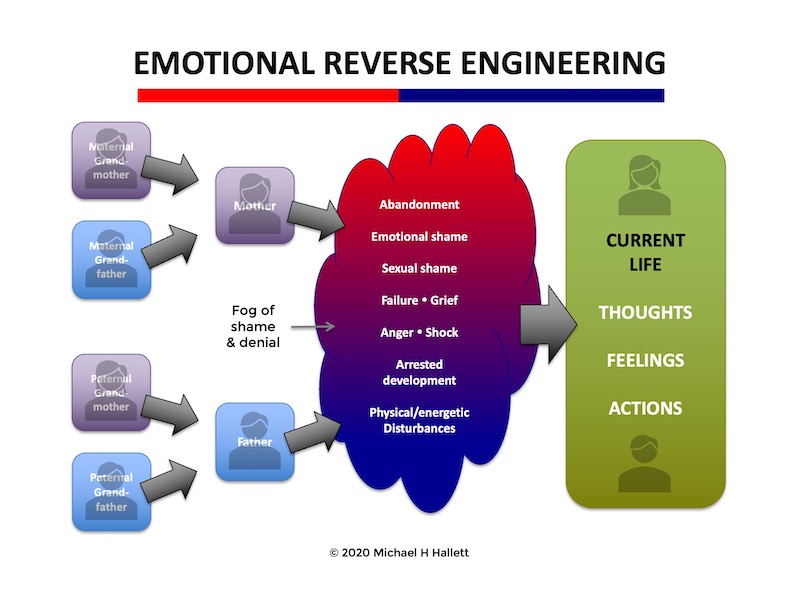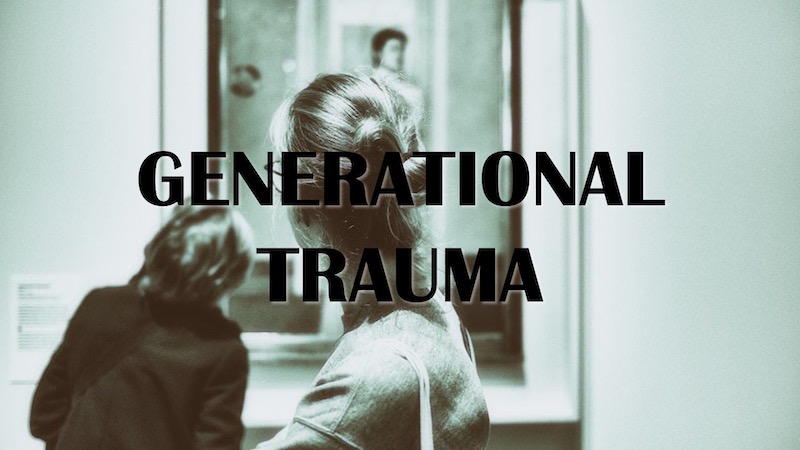Emotional Reverse Engineering
- 9 November 2022
- Posted by: Michael H Hallett
- Category: Generational trauma , How-to & step-by-step ,

I’ve likened generational trauma to the white spaces on old maps marked ‘Here be dragons’. We suspect something’s out there but we’re not exactly sure what. My experience is that when you consciously understand a trauma it can no longer remain unconscious. It must surface for healing—for the simple reason that you’ve brought it into consciousness. This requires some emotional reverse engineering, and a little delving into my past.
By figuring out any two of the three trauma components—inputs, processes and outputs—the missing component can be discovered through reverse engineering.
“Pipes everywhere”
I used to work at the largest cannery in the southern hemisphere. Back in the 1980s, the cannery sold vast quantities of tomato sauce, baked beans and tinned fruit. It knew how to price them to make a profit—but it didn’t know what they actually cost to make.
I was part of the team given the task of creating the software to figure this out.
I can remember standing on a gantry, high above the factory floor, looking down on a swirling maelstrom of people, machines, forklifts, ingredients, packaging, pallets, tin cans, electrical cables. Pipes gurgled with water, fruit syrup and tomato paste. One of the factory staff mumbled, “Pipes everywhere.”
Process manufacturing
Costing factory production meant understanding factory processes. There are two kinds of manufacturing: discrete manufacturing and process manufacturing. Discrete manufacturing is where every finished item has the same component parts, for instance a car. It’s very predictable and, quite frankly, very boring.
With process manufacturing, the components include raw materials with variable properties. When you make tomato paste, every truckload of tomatoes is chemically different as they come from different farmers, different fields and different microclimates. You don’t know what you’ve made until you’ve made it.
Process manufacturing from raw materials works like this:
Unique inputs → consistent process → unique outputs
This turns out to be a very good model for mapping human emotional behaviour in a structured, mechanical way.
Inputs and outputs
We are all unique—our inputs and outputs—yet are all subject to consistent processes, such as falling in love, losing someone dear to us, experiencing success and failure in different spheres of life.
Our inputs are our past experiences, our belief systems, our innate and our inherited DNA. Our outputs are our thoughts, feelings and behaviours. Universal human processes turn inputs into outputs.
When our inputs are healthy, our outputs are healthy. Similarly, if we have unhealthy inputs we’ll experience unhealthy outputs. The rule of thumb is that if the outputs exist then the corresponding inputs must also exist.
 You could just as easily have the arrows pointing in the opposite direction. The process can be read both ways.
You could just as easily have the arrows pointing in the opposite direction. The process can be read both ways.
Reverse engineering
I unconsciously turned to this model when I started applying myself to healing my own emotional issues. By figuring out any two of the three components—inputs, processes and outputs—the missing component can be discovered through reverse engineering.
Once we understand the nature of our damaged inputs, we can pinpoint their source. We can understand, accept and release psychological damage. This allows us to add another stage to our process map:
Trauma → unique inputs → consistent process → unique outputs
Use the following process to examine outputs—thoughts, feelings, actions—and reverse engineer an understanding of possible inputs, particularly what might be caused by inherited trauma.
1. Document the outputs
Document the outputs—the problematic current-life thoughts, feelings and actions—as accurately as possible.
| Thoughts | Feelings | Actions |
|
What are the thoughts whose origins you’re trying to establish?
|
What are the feelings whose origins you’re trying to establish?
|
What are the actions whose origins you’re trying to establish?
|
2. Analyse the processes
Cross-reference these outputs against the thoughts, feelings and actions arising from the various traumatic processes.
| Process | What do you know? | What do you suspect? |
| Abandonment | E.g., grandfather walked out of the marriage | E.g., emotional distance, inability to commit |
| Emotional shame | E.g., child outside marriage | |
| Sexual shame | E.g., affairs | |
| Failure | E.g., business failure | |
| Grief | E.g., unexpected death | |
| Anger | E.g., placed in orphanage | |
| Shock | E.g., wartime experience | |
| Arrested development | E.g., poor boundaries | |
| Energetic disturbances | E.g., depression |
3. Identify the inputs
Identify the sources of the outputs in past experiences, beliefs or DNA. Hypothesis: if you can’t identify a current-life source for an output, consider the possibility that it’s inherited trauma.
| Thoughts | Feelings | Actions |
| Can you identify a generational source for the problematic thoughts? | Can you identify a generational source for the problematic feelings? | Can you identify a generational source for the problematic actions? |
The more precisely you understand an unconscious issue, the more readily it can be brought into the light of consciousness.
Next steps
For further resources on generational trauma, both free and paid, please click on this image.
Photo by Bill Oxford on Unsplash

